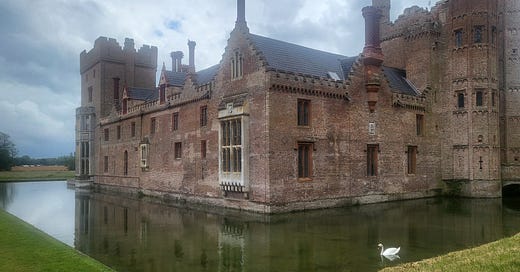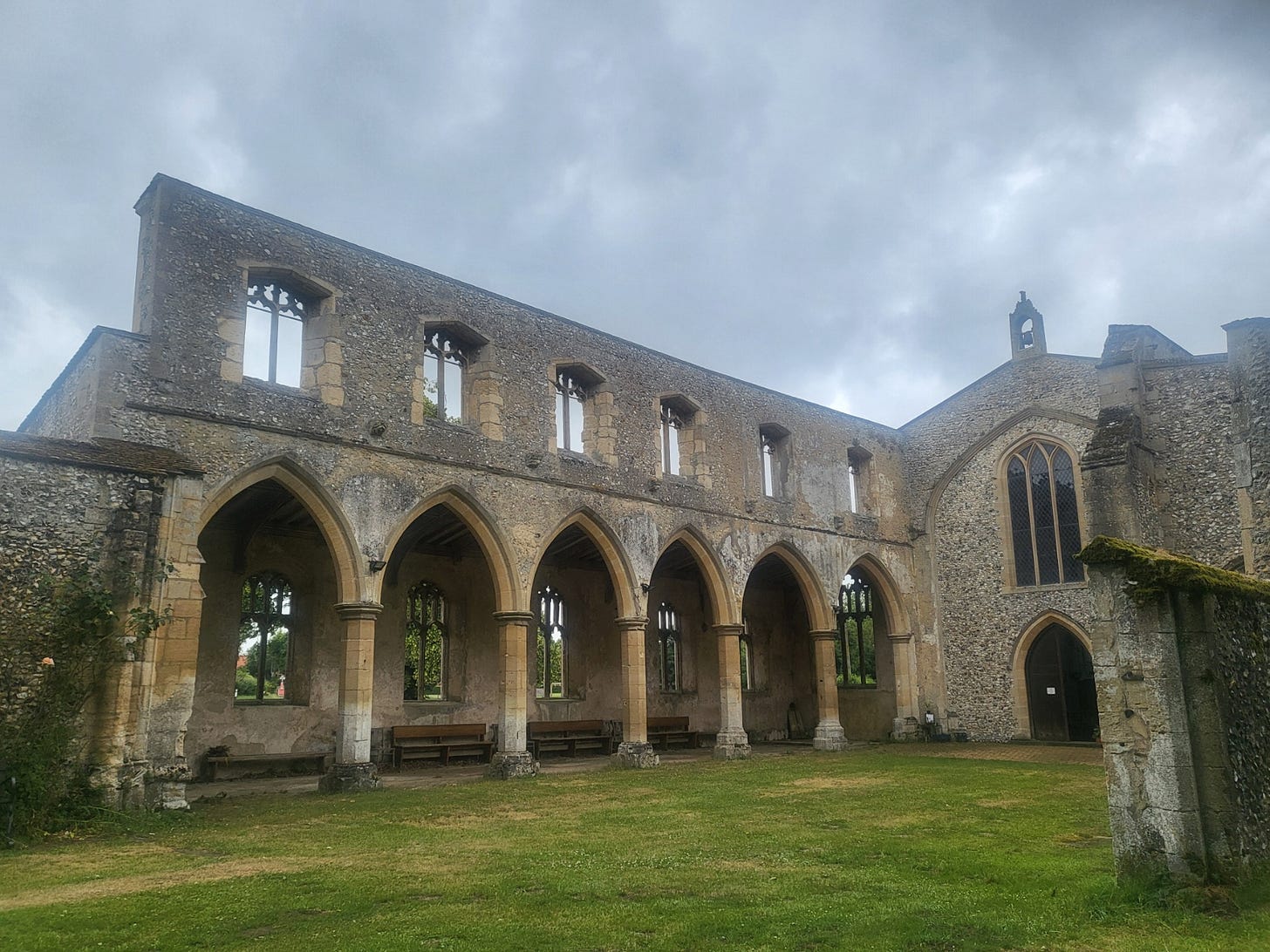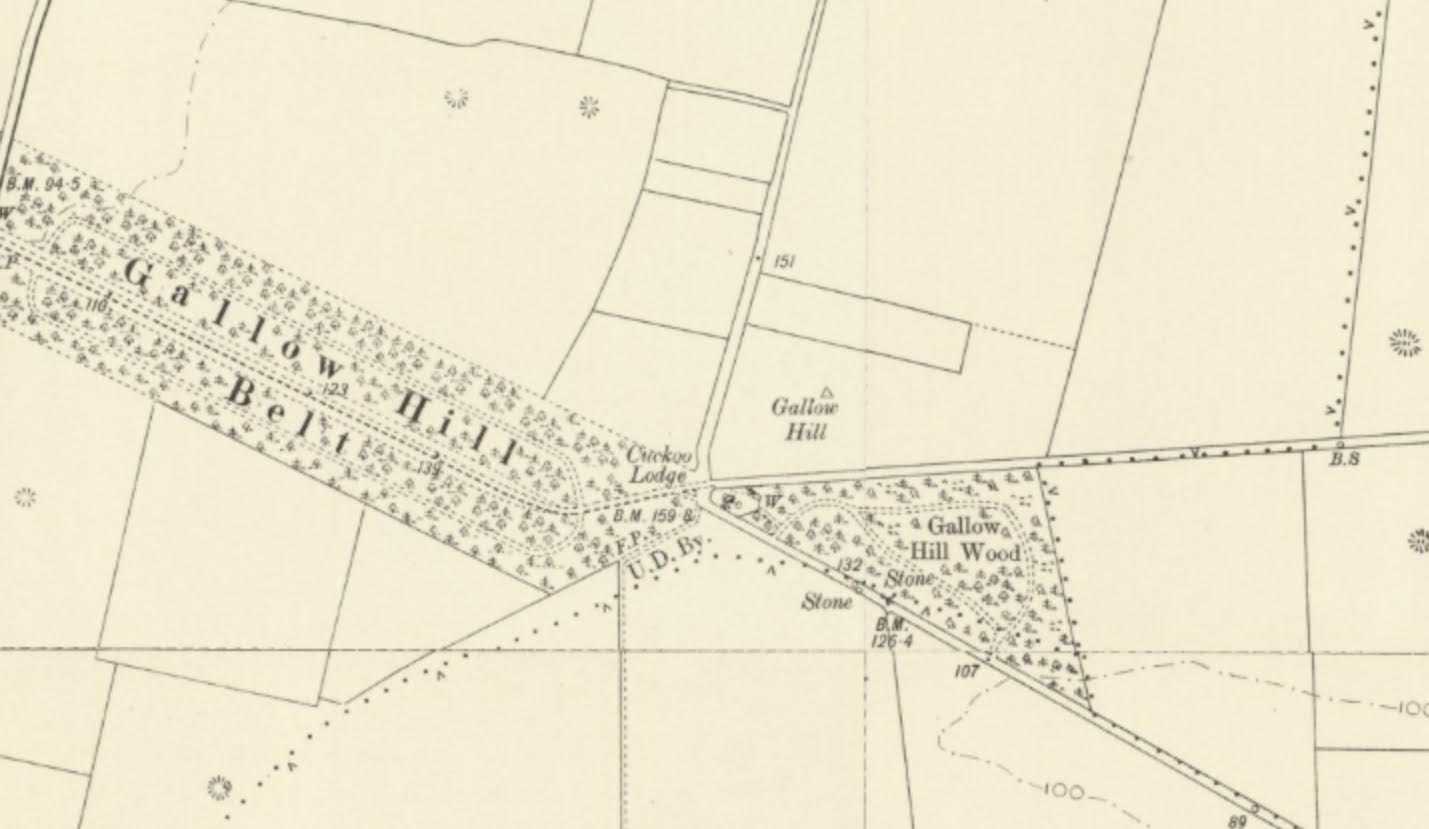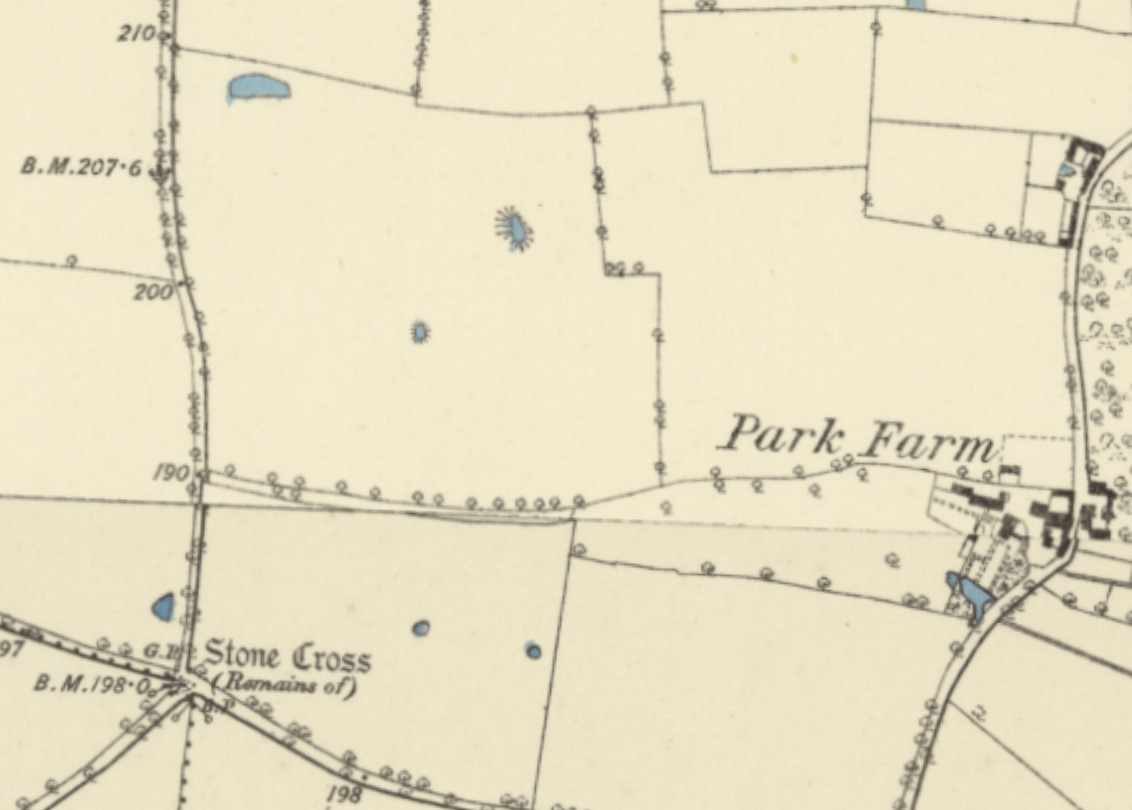As we head into spooky season I thought I’d do something a bit different this week and bring you three supposedly haunted places from the Norma Explores Norfolk blog archive. I’ve always loved ghost stories and as a child, it was the thing that inspired me to take an interest in history. To me, meeting a ghost would effectively be the same as meeting an actual person from history, so I started trying to visit as many haunted places as possible! I have never met a ghost, but I still love the stories. Most of these tales have their roots in true historical events, so these days when I hear of a haunted house I look towards researching its history to see why its ghost stories may have come about to begin with. For this Substack, I’m in the county of Norfolk. I worked and lived here for five years before starting the Norma Explores adventure full-time, and it’s a county that lends itself to tales of mystery and imagination.
I’m starting in west Norfolk, at a fine Elizabethan moated hall. Welcome to Oxburgh.
This house was built in 1482 for the Bedingfeld family and would be occupied by them for the next 500 years. Since the 1950s it has been cared for by the National Trust, with the family still in residence. Many of the rooms are open to the public, including the King's bedroom, where Henry VII staying during his visit in 1498.
Just off the King's chamber is where a latrine was cleverly converted to hide a priest hole during the persecution of the Catholics. You can see down into the hole where the priest would have been hidden. It's no longer open to the public, but when I was a teenager I went down in to the priest’s hole itself and it was extremely claustrophobic. The priest would have been shut in, with no way of getting out by himself. If the family were arrested or forced to leave before they had released him, he would have starved to death. It's not known if it were ever used. The house was certainly raided, but it would never have been recorded if they'd have had a priest in residence at the time.
The house is reputed to have two ghosts. One, a visiting Spanish or possibly Italian woman. She is said to have disappeared while heavily pregnant, at some point in the 16th century.
Another ghost, of another 16th century lady, is seen haunting the north bedroom and staircase. She is said to have thrown herself from the bedroom window, drowning in the moat below.
There are variations on these tales, sometimes merging the stories, sometimes suggesting one or other was a jilted lover or mistress. There are no real historical references that tell their stories. Italian and Spanish women did indeed visit, but as far as I can find, no terrible consequences followed their visits.
Still, these ghosts have been seen. Over 500 years of history would probably include quite a few tragic tales, so I'm surprised there aren't more ghosts here!
The grounds contain a small chapel, a kitchen garden, and a wonderful walk through a meadow if you visit in June or July. Oxburgh is a pay for entry property.
The semi ruined church of St John in the village next door is also worth a look. It was once one of Norfolk’s largest churches, but in 1948 it’s huge spire collapsed onto the church below. The 16th chapel survived, but the tower and nave were never rebuilt. The chapel contains some stunning terracotta memorials which are worth a visit open.
///archives.riverside.hounded
-
Next we move further around the coast, to Wells-Next-The-Sea. A pretty seaside town with lots of picturesque cottages crammed into its narrow lanes. Our haunted location is just outside the town. You can walk to it via a footpath that runs along the edge of the cemetery. It leads you out to a spot known as Gallows Hil. There you will come across Cuckoo Lodge.
This little cottage, charming and happy in the sunlight of a spring day is, nonetheless, surrounded by echoes of the dark.
Built in the mid-1800s, it is presently a holiday home. Once, though, it was home to a family tainted by tragedy. In the garden of the cottage was a well, one of the deepest in Norfolk it was said. A young girl from the family fell in, drowning in the dark waters so far below.
The ghost of this girl still haunts the cottage.
Just outside, now a cross-roads of quiet lanes and country tracks, there was once a gibbet. Long before the building of the cottage, folk would gather here to witness the last moments of a condemned soul.
I don't know if this was a regular execution spot or, possibly, an execution and gibbeting of a criminal nearby the site of their crime. The display of the corpse on the nearest crossroads was intended both as a warning to others, but also to confuse the spirit of the deceased. His damned soul would not find its way back to the living to torment them further.
It's a beautiful spot now, but spare a thought for the darker days of this place's past.
///fixated.unlisted.hoot
-
For our last tale we travel even further along the coast, to Aylmerton.
What are locally referred to as 'the shrieking pits' are a group of iron working pits dating to the middle-ages. These hollows dot the local landscape as a reminder of our industrious past. In the early medieval period, ironstone nodules were dug out of the ground, and smelted down nearby. Iron slag from the workings pops up in fields and gardens still.
The pits were never unfilled and became little havens for wildlife, many now forming pools surrounded by foliage and flowers. Although these were fairly common in the local area, there are a cluster near to Aylmerton that have long been reputed to be haunted.
The local legend is that they are haunted by the ghost of a tormented woman who came here in search of her murdered baby. The story goes that at some point in the last 500 years, this woman gave birth to her child in a house nearby. Her husband believed someone else had fathered the child and in a jealous rage took the baby from her, rode out to the pits and threw the baby in to one of them to die.
It is likely this cruel action drove her insane and she would come out to the pits in search of her infant. She is seen desperate and screaming, wringing her hands and moving from pit to pit.
Some say that she, too, was murdered by her husband the same night; however I suspect her anguish was more of a punishment in his eyes than simply taking her life. Surely if they had died together, she would be at peace with her baby somewhere and not seen searching as she might have done were she forced to live not knowing?
///used.shredding.boarding
I hope you’ve enjoyed hearing about three quite different places. Whether you’re exploring country houses, workers cottages, or the countryside, always keep an eye out for the echoes of the past! You may one day get to meet an actual person from history!
If you don’t already, please join me as a subscriber. It really helps me find new people to share these stories with and encourages everyone to appreciate the history all around us. I’m on a mission to record and photograph as much of the UKs heritage as possible, so every little bit of support encourages me in this somewhat epic task!









